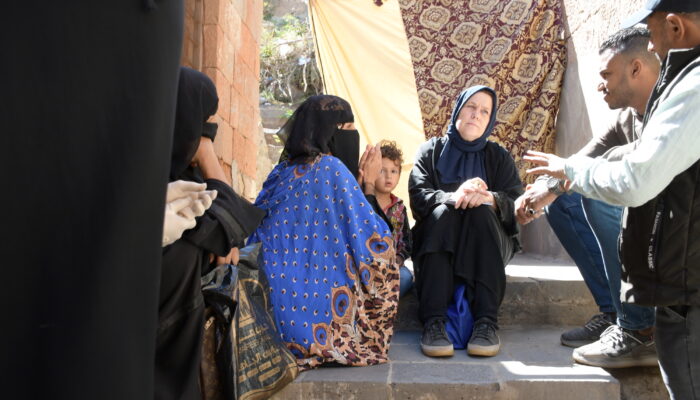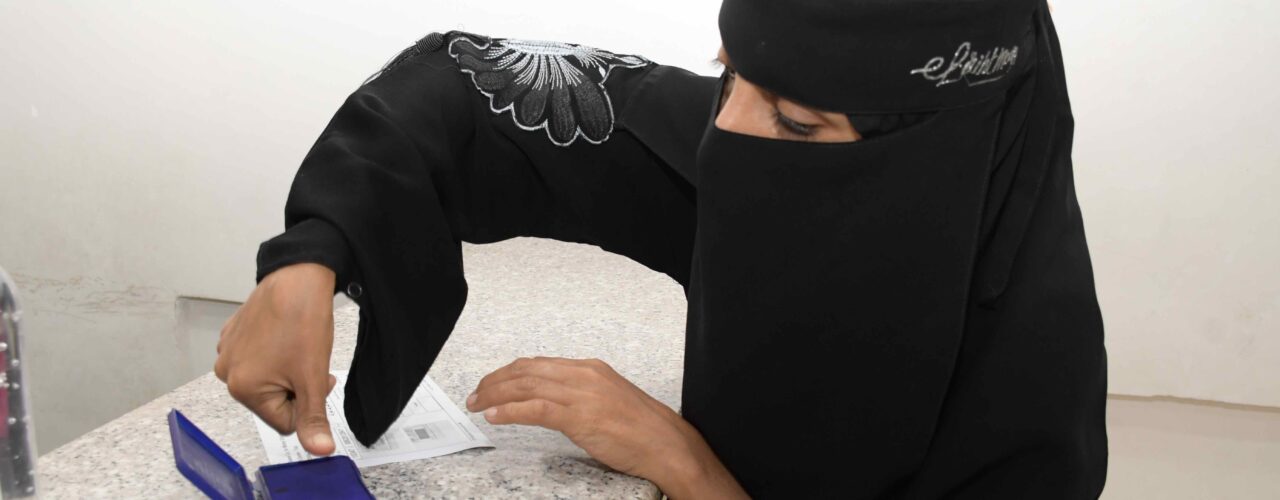Visit to Yemen - by Inge Leuverink

Yemen and our projects
After a long time waiting for permission, I am finally in Yemen, a country that has had a civil war since 2015 and has been one of the top 5 countries with the greatest humanitarian needs for quite a while now.
My visit was badly timed because the peace agreement between the Houthi and the internationally recognized government and coalition has just ended. Fortunately, peace talks are on-going and things are still calm.
Cordaid has been working in Yemen since 2019 with local partners in health care (including mental and psycho-social health) and supporting vulnerable groups with money (cash assistance). We do this together with the DRA, with the Caritas network and with our own funds.
Since there are no international flights, I fly UNHAS (UN humanitarian flights). To my surprise, parts of Aden look a bit like the Ukraine with bombed buildings and rubble. There was heavy fighting in Aden in 2019 and much has not yet been rebuilt. Before the war, Aden was a progressive city. However, according to the women I talk to, it has become more conservative. Many women cover their faces when they are away from the family – whereas before they did not – and the mosque preaches several hours a day.
Yemen was already one of the poorer countries in the Middle East but the prolonged conflict and the displacement together with the economic downturn have raised needs to unprecedented levels. More than 23 million people need help, nearly three-quarters of the population. At the same time, it is clear from all the conversations in Aden that the availability of donor funds has been greatly reduced by “Covid and Ukraine”. The Yemen 2022 humanitarian plan and budget is for only 45% covered. International and local aid organizations complain that programs could not continue and they have had to lay off staff. Many say that there needs to be a switch to other ways of working, more livelihood oriented and more long term solutions besides humanitarian work which remains necessary for the time being. But they also outline that this will surely very difficult if there is not a new agreement yet and the negotiations are therefore anxiously followed.
Visit Taiz
During my visit I get the chance to go with Yemeni colleagues to Taiz, a city and region in the South-West. It is in the middle of a conflict area, where we have a cash program with local partner YWBOD. Because of the conflict, people cannot take the direct road to Taiz but have to take a bad road through the mountains, a 3 hour trip now takes about 6 hours.
The first part goes through “tribal area ” with danger of car theft. If you are with a veiled woman people are more likely to leave you alone, so I am neatly veiled in the car. Taiz city is like East and West Berlin, the city is divided and controlled by different parties. The contact line is full of mines and snipers with no passage. I talk to many people who are in survival mode, men and women. WFP has had to scale back food aid and instead of getting monthly rations, it is now every 2-3 months and then less than before.
People realize that aid is unreliable and are looking for work, but the economy is in bad shape and work is hard to find. For women, barriers are added because much work outside the home is not socially acceptable for them.
Life is a struggle
But how do they survive? By daily wages, selling everything you have, by getting help from neighbors and family, lots of credit and borrowing, putting children to work and if you don’t know anything else, begging…. It’s very hard for a lot of families. It is impressive to sit on the doorstep with people and hear what has happened, what they come up with to survive and also to realize again that every household is different. That’s why handing out money works well. People can decide for themselves what their priorities are. Of course it also has its risks, a lot of men and more and more women chew Qat (leaves that are stimulants) on which they spend quite a lot of money. But even more challenging is that there is quite a bit of inflation and fluctuations in exchange rates that cause the value of money to keep changing. With $100 on Monday you can still help 10 people, the week after it might only be 7.
The local partner faces many challenges and this one in particular was always mentioned and discussed; when there are more and more people who need help and you have a limited budget, how do you choose them and how do you avoid conflicts? The complaints phone of the partner organization receives a lot of calls from people who think they also fall within the criteria. I have great admiration for the young female staff of partner YWBOD who has to answer the phone and who patiently explained the situation over and over again, for the project staff that is working with district committees, and select the people who need help the most. The pressure is great.
Let's keep the hope up
Safe and sound back in Aden, I give a training to Cordaid and DRA partners on how to set up cash programs. During this training, we discuss the challenges and participants share experiences to overcome these. The Yemeni staff from international and local organizations try to keep their spirits up. Meanwhile, the noises about the course of negotiations are positive and most people think a peace pact is going to happen, let’s hope so….
Inge Leuverink – advisor on humanitarian aid Cordaid

